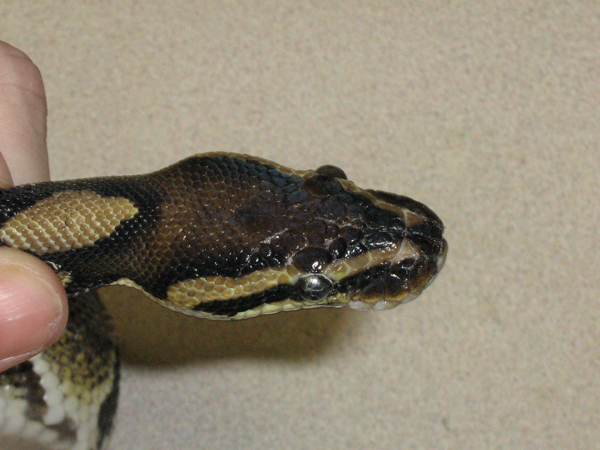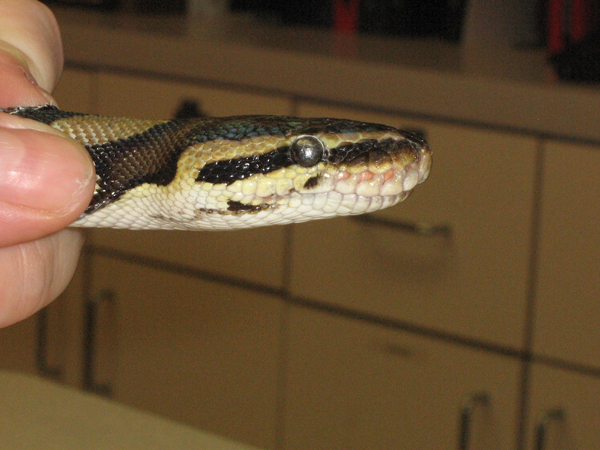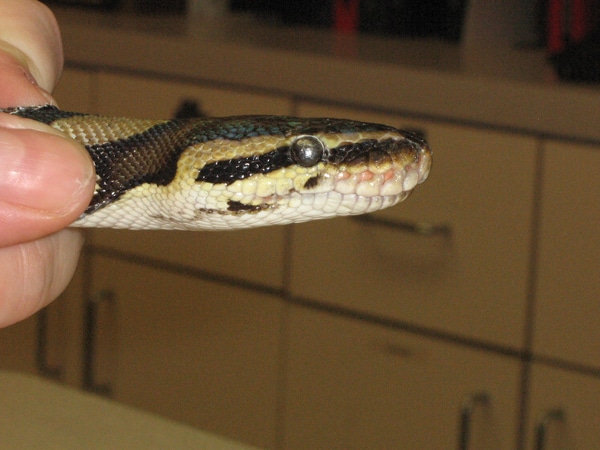Causes A spectacle is the fused eyelid of a squamate reptile. A retained spectacle is when this fused eyelid does not come off with the rest of the
Causes
A spectacle is the fused eyelid of a squamate reptile. A retained spectacle is when this fused eyelid does not come off with the rest of the reptile’s shed skin.
Species At-Risk
Snakes and those lizards that lack eyelids such a tokay geckoes. It is very unusual for this to be a problem in lizards.
Symptoms/signs
A snake with a retained spectacle (eyecap) will have an opaque grainy look to the affected eye. This becomes more obvious as additional layers of spectacles accumulate. There may be dried skin visible in the groove between the eye and surrounding scales. Always check a snake’s shed to be sure both spectacles are present.

kevin wright
Retained eyecaps are caused by improper husbandry but can also be due to certain infectious diseases.
Predisposing captive conditions and/or other factors
It often indicates suboptimal husbandry, especially low humidity. It may be a sign of certain infectious diseases, such as external parasites, “mouthrot”, septicemia, and others. Occasionally a retained spectacle may be from other non-infectious conditions such as glaucoma.
Diagnostic tests a veterinarian may recommend
Your veterinarian may ask detailed questions about your reptile’s husbandry. Screening tests suggested under dysecdysis may be appropriate if your reptile is not otherwise in good health.
Safe Practices / Prevention
Isolate: There is no need to isolate a reptile with shedding difficulties unless a specific infectious disease is detected as a contributing factor.
Quarantine: There is no need to institute special quarantine for a reptile with shedding difficulties unless a specific infectious disease is detected as a contributing factor.
Proper hygiene and sanitation: Since an increase in humidity in all or a part of the cage is often required to resolve shedding problems, it is important to spot clean cage daily to remove droppings, uneaten food, shed skin, and other wastes and to deep clean and disinfect these items monthly. Throw out any organic materials such as wood if it appears moldy or otherwise visibly contaminated.

kevin wright
A retained spectacle may be treated by placing the reptile in chin deep, cage temperature water for 30 minutes.
Treatments a veterinarian would likely recommend
A retained spectacle may be treated by placing the reptile in chin deep, cage temperature water for 30 minutes to loosen the retained eyecap before it is manually removed. Sometimes a water-soluble gel may be placed on the affected spectacle after the soaking to keep the spectacle pliable during removal. Many retained spectacles will shed with gentle but firm rubbing of your thumb across the spectacle. For stubborn retained spectacles, a veterinarian may need to use thin-bladed thumb forceps or other tools to lift one edge and loosen it. Inexperience can lead to damaging the underlying eye.
It may help to place the snake inside a damp pillow case containing a moistened towel. This is then placed into its cage or other warm environment for several hours. As the snake crawls around, it may remove the spectacle. If not, then manual removal is needed.
Your veterinarian may advise increased humidity in all or part of the cage. This may be from adding a larger water bowl, increasing the length of misting and / or the frequency of misting, adding a humidifier, a change in the substrate, or the addition of a “humidity box”. This humidity box may be a plastic container half-filled with damp sphagnum moss or moist 0.5 to 1” cubes cut from foam rubber. A hole should be in one side large enough for the reptile to crawl through but not so large that the material inside dries out within a day.
Prognosis
Good if caught early or if the retained spectacles are removed easily. Poor if the spectacles are difficult to remove.
Zoonotic Potential
None



